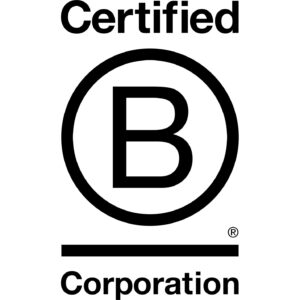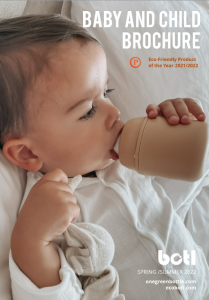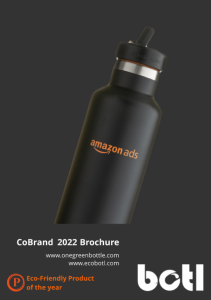We’re all super stressed about saving money right now, and don’t even get us started on the eco-guilt that we battle with on the daily. So this begs the question: how often do we REALLY need to replace our everyday products? Having good quality make-up brushes, bras, jeans and bottles are crucial for maintaining our health, image and (quite frankly) sanity, so here are our guidelines on how to keep things fresh.
Thanks to our friends at Y.O.U underwear for their contribution!
Bras
Replacing your bra regularly is one way to avoid the dangers of an ill-fitting bra, which can include anything from headaches to back pain from poor posture. But according to a survey carried out by Harper Wilde, 70% of women said that their oldest bra is between 2-5 years old. This blog shares why, how and when to replace your old faithful bras!
Why can’t you keep a bra forever?
Bras are made out of stretchy material, and in many ways, it’s this factor that is integral to the support they provide. A bra needs to be able to move and flex with the body, and – crucially – to cushion breasts rather than hold them in one position. Elastic allows this to happen, but it loses its shape with extended use and stops being effective. Over time, the energy applied to elastic (through wear and exposure to water and heat) causes each separate polymer chain in the fibre to break down. This means it will no longer go back to its starting point once it has been stretched.
How often should you replace your bra?
This is a simple question, but the answer can get pretty complicated – depending on how much you use and wash your bras, and how much your body shape fluctuates. Even with gentle usage and care, all bras will lose their shape over time as the elastic fibres in the band and straps begins to deteriorate. It’s generally recommended that a bra should last anywhere between 6-9 months, although we think that with good care your bras should last a lot longer. We encourage you to look after them as much as they look after you – extending the life of your clothes by even a small amount has a significant environmental benefit.
Check out Y.O.U Underwear’s garment care guide for tips on washing, mending and stain removing your Y.O.U undies.
You can also read their guide for more tips on how to increase the lifespan of your underwear.
How to tell when a bra is worn out
Other than its age, there are a few other things to look out for if you think your bra might have passed its use-by date:
- The band will be stretched out. The band is responsible for around 90% of a bra’s support. If it’s stretched, it will ride up, causing straps to slip and fall, cups to fall forward, and underwires to dig.
- You will have to pull the band beyond the hook closures for it to be tight.
- The straps will be falling off your shoulders, even when tightened. Straps can be tightened all the way by pulling the buckles all the way down to the strap, but this isn’t the correct way of wearing a bra and it’s one sign that you might need a replacement!
- You can see the outline of a bra cup through a tee-shirt. This is a sure sign that the bra is stretched or too big.
- You can see permanent crinkles or creases in the padding.
Y.O.U bras
Y.O.U’s Bralettes (like the stars pattern pictured) contain 5% elastane which is crucial for stretch, comfort and quality. While they don’t have any padding or wiring, they still need to cared for to optimise their longevity. Keep an eye on the fabric – it’s colour and feel will tell you a lot about how much life it has left in it, as will the tightness of the straps and band.
What can you do with your old underwear?
Y.O.U’s buy-one give-two model means that every time you buy a pair of Y.O.U underwear from their core collections, they donate two pairs of underwear to the charity Smalls for All.
They also collect gently-worn bras to send directly to Smalls for All each month. We all have a drawer full of old bras that we no longer wear at home, so why not have an early Spring clean and send any unwanted ones to Y.O.U? You can send them directly at Y.O.U underwear, 11 Bodley Place, Oxford, OX2 7TF. You can also donate new pants to Smalls too, they just need to be unworn and in packs!
For any underwear that is at the end of its life, last year Y.O.U launched a circular fashion scheme in partnership with TerraCycle, which allows customers to drop off their underwear, socks and tights for recycling. They accept any brands too!
Use code OneGreenBottle10 for 10% off at Y.O.U Underwear!
Makeup Brushes
It is recommended to replace makeup brushes every three to six months, depending on how frequently you use them and how well you care for them.
If you notice that your brushes are shedding bristles, have become stiff or scratchy, or are not applying your makeup as smoothly as they used to, it may be time to replace them.
Regular cleaning of your brushes can help extend their lifespan, but over time, natural wear and tear and exposure to makeup and skincare products can cause them to deteriorate. It is important to replace your brushes regularly to ensure that you are getting the best performance and hygiene from your makeup tools.
How to clean your makeup brushes:
Dip the brush underneath running water, then into a bowl of antibacterial soap. Massage in with your fingers and then rinse!
Leave to dry overnight (try not to put it directly on or near a radiator as this can damage the bristle glue)
Reusable Water Bottles
Although plastic bottles are known to leach toxic chemicals which can damage your health (even the ones that are BPA free could contain multiple other chemicals which are linked to reproductive issues, obesity and diabetes) your bottle becomes a lot more susceptible to leachates when it is cracked, scratched or damaged. This signals it needs replacing ASAP!
Stainless steel bottles can last for up to 10 years if looked after (we have plenty of customers who have bottles this old that are still going strong!) As they are non leaching the only reason to replace them would be when the wear and tear becomes too much. Although we would recommend you check what type of plastic the bottle cap is made from (ours are totally non-toxic and BPA/BPS free) as that may need replacing more often.
Jeans
The lifespan of jeans can vary depending on the quality of the fabric, how often they are worn, and how they are cared for. However, on average, it is recommended to replace your jeans every 2-3 years.
If you wear your jeans frequently or wash them often, they may wear out more quickly and require replacement sooner. Signs that your jeans may need to be replaced include holes or thinning fabric in high-wear areas, such as the knees or seat, or if they have become stretched out or misshapen.
It’s important to take proper care of your jeans to extend their lifespan, such as washing them inside out, washing them in cold water, and avoiding the dryer if possible. Regular maintenance and repairs, such as patching holes or reinforcing weak spots, can also help to prolong the life of your jeans.












